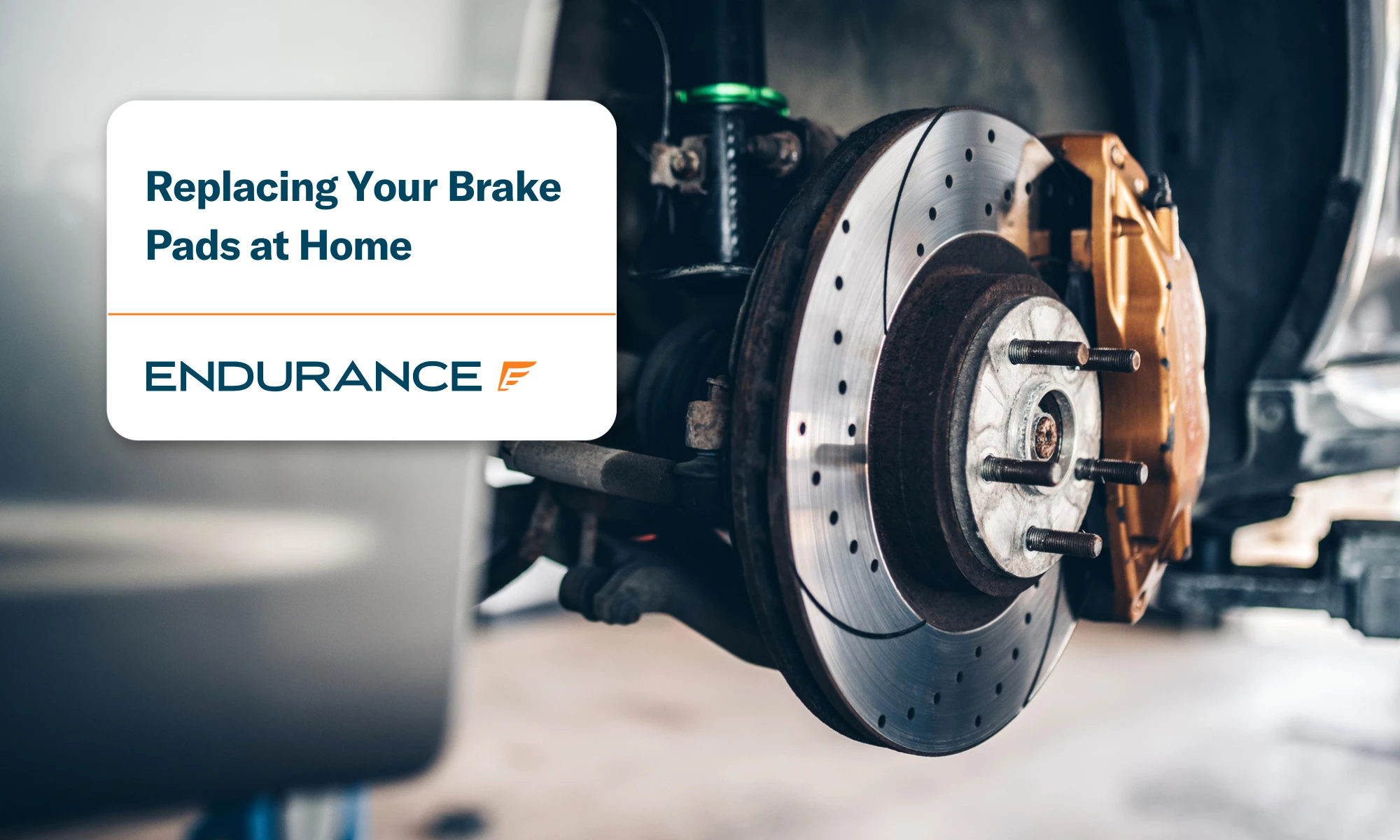Get this deal! Call now.
Speak with a vehicle protection plan specialist and get $300 off any new contract instantly.
Call 866-678-4172
or scan the code below


Brake pads are one of the most crucial components of your vehicle’s braking system, ensuring your car stops safely and efficiently every time you press the brake pedal. Like all “wear and tear” parts, brake pads degrade over time and require regular replacement.
While taking your vehicle to a repair shop is always an option, doing a brake pad change at home can save money and give you a better understanding of how your vehicle works. With the right tools and preparation, it’s a manageable task for many car owners.
This guide will walk you through the process of a DIY brake pad change for common vehicles, with a focus on safety, simplicity, and efficiency. You’ll also learn how to recognize when it’s time for a replacement and how an auto protection plan like Endurance can help you plan for future repairs and maintenance.
Brake pads are the material that presses against your brake rotors to slow or stop your vehicle. As such, they play an essential role in your car’s overall safety. Each time you hit the brakes, however, the pads absorb a significant amount of energy and heat, gradually wearing them down.
If ignored, worn brake pads can damage other brake system components, including rotors and calipers, ultimately leading to more costly repairs. In the most extreme cases, failure to replace brake pads in time can compromise your ability to stop the vehicle safely.
Recognizing the signs of brake pad wear helps prevent more serious issues. Watch carefully for these common indicators:
As a general guideline, consider changing your brake pads every 25,000 to 65,000 miles. However, factors like driving habits, terrain, and vehicle type can affect this timeline. It’s also smart to include brake inspections during routine maintenance, as this may help you spot problems sooner.
Before starting your DIY brake pad change, gather the following items:
Proper tools not only make the job easier but also ensure a safer work environment. Take a few minutes to double-check that you have everything and it’s all in working order before you begin.
It’s important you take the proper steps to prepare your vehicle. Make sure to:
Refer to your owner’s manual for jack point locations and any model-specific guidance. Always double-check that your vehicle is stable before getting underneath.
First things first, you need to remove the old brake pads:
Some auto parts stores offer free rotor thickness checks, which can help you decide whether a rotor replacement is necessary. If your rotors are below the minimum thickness, new pads alone won’t restore optimal braking power.
Now that you have the old brake pads removed, you can put the new ones on:
Some calipers use a sliding mechanism that needs lubrication. If yours does, inspect the caliper pins and clean or grease them if necessary.
With the new brake pads installed, you’re almost ready to hit the road again. But first:
Before heading out, double-check your work and ensure there are no tools or loose bolts left behind.
Take your vehicle for a low-speed test drive in a safe area. Light braking during the first few hundred miles allows the pads to bed in properly. A slight burning smell during the first drive is normal and should dissipate quickly.
Some top brake maintenance tips include:
Some vehicles have more complex braking systems, such as electronic parking brakes or integrated sensors, that may require additional steps or dealer tools. If your DIY efforts feel overwhelming, there’s no shame in turning to a trusted mechanic: brakes are an essential safety feature and must be replaced correctly.
While wear and tear items like brake pads aren’t usually covered under most extended warranties, Endurance offers vehicle service contracts that include maintenance-related services. For instance, our Advantage plan can include routine services such as brake pad replacement as part of scheduled maintenance. A great deal for budget-conscious drivers.
Even if you’re comfortable with basic DIY tasks, an auto protection plan helps safeguard you from larger, unexpected issues. Components like the brake caliper, master cylinder, or ABS system can be costly to repair and may be covered under select vehicle service contracts.
Endurance auto protection plans can also help cover the following (though be sure to check your contract for details):
Our customers benefit from financial protection and enjoy driving confidence. Whether you’re commuting daily or planning a cross-country road trip, having a comprehensive extended car warranty or vehicle service contract reassures you that help is never far away.
Replacing your brake pads at home is a valuable skill that saves money and builds confidence in maintaining your vehicle. With the right tools (and safety practices), a DIY brake pad change can be relatively easy to complete. Regular brake maintenance ensures not only your safety but also the long-term performance of your car’s braking system. And when you combine that with coverage from Endurance, you’re even better prepared for what’s ahead.
To find out more about our customizable vehicle protection plans and which might be right for you, speak with an Endurance advisor at (800) 253-8203 or request a FREE quote. You can also see your price and plan recommendations on our online store, or head over to our extended warranty blog for more helpful articles.

We've received your vehicle information and will contact you shortly with your quote.
— OR —
Start shopping for a coverage plan now.

We're here to make sure you get the most comprehensive EV protection. That's why we've partnered with Xcelerate Auto to offer you transparent and dependable Tesla coverage.
Want us to contact you about XCare coverage for your Tesla?



Your protection is our top priority. Your quote is in progress and you will
receive a confirmation
email shortly.


Speak with a vehicle protection plan specialist and get $300 off any new contract instantly.

Call for $300 off any new plan!
By clicking the button, you consent to Endurance using automated technology to call, email, and text you using the contact info above, including your wireless number, if provided, regarding auto protection or, in California, mechanical breakdown insurance. You also agree to the Endurance Privacy Policy and Terms and Conditions. Consent is not a condition of purchase, and you can withdraw consent at any time. Message and data rates may apply.


Speak with a vehicle protection plan specialist and get $300 off any new contract instantly.
Call 866-678-4172
or scan the code below



Simply fill out the information below and we will follow up fast with your free no-obligation quote.
By clicking the button, you consent to Endurance using automated technology to call, email, and text you using the contact info above, including your wireless number, if provided, regarding auto protection or, in California, mechanical breakdown insurance. You also agree to the Endurance Privacy Policy and Terms and Conditions. Consent is not a condition of purchase, and you can withdraw consent at any time. Message and data rates may apply.

To speak to a vehicle protection plan specialist and get $300 off any new contract instantly
Scan the code below
Since the age of 16, Keith has been immersed in the automotive industry, beginning his career by helping his dad fix vehicles at a young age. Keith now owns his own family-run, ASE Certified repair shop, A+ Autocare. At his shop, he focuses on building trusting relationships with his community through exceptional customer service. Read more about Keith.